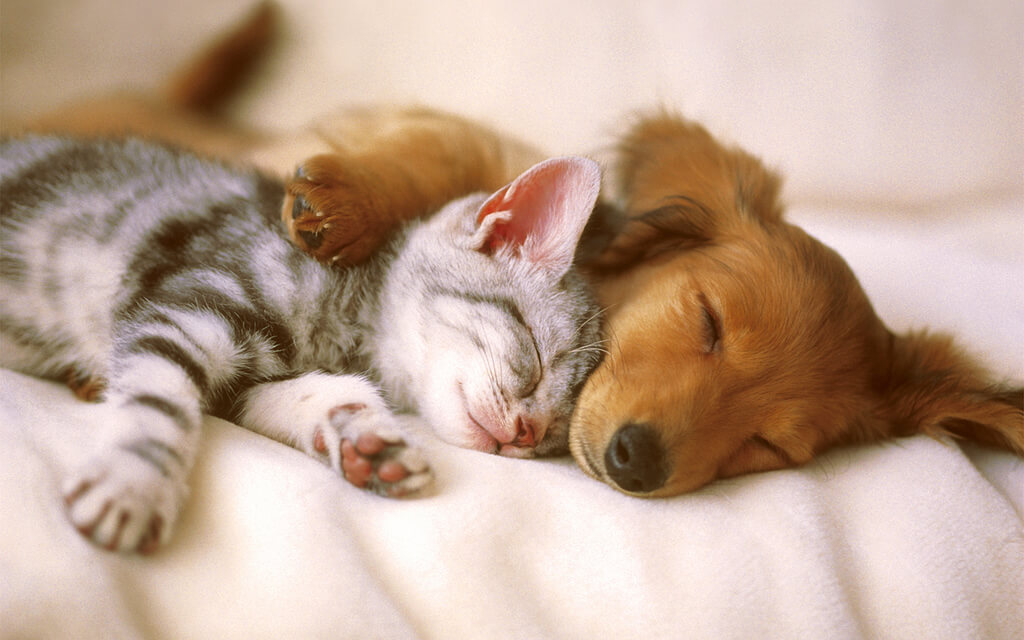-
If you type ‘overweight dogs’ into Google, it retrieves pages and pages of results covering canine exercise tips, dog food recommendations, portion advice, weighing methods and nutritional information. Overweight dogs is a ballooning trend and as animals can’t choose what food is placed in front of them - and don’t have the thumbs to pop the top off an ice cream tub - a high responsibility is placed on their owners when they become overweight.
Obesity is one of the most common health problems in Australian dogs and can lead to a range of health issues including arthritis, diabetes and heart disease. Feeding your dog the wrong type or quantity of food, overindulging in snacks and treats and not providing opportunities for regular exercise are some of the common roads that lead to overweight dogs.
In Australia, obesity in humans has become the single biggest threat to public health. Over five million Australians are obese and it has overtaken smoking as the leading cause of premature death. ‘An epidemiological study of environmental factors associated with canine obesity’, a study published in the ‘Journal of Small Animal Practice’, found a link between the likelihood of obese people owning and caring for an overweight dog. The study identified owner age, income, exercise levels and frequency of snacks as risk factors associated with canine obesity.
The prevalence of canine obesity has paved the way for a new industry to develop to help combat the mounting issue. Weight loss dog centres and canine fitness classes are springing up around the globe and typically involve an initial consultation to determine the severity of the weight gain before tailoring a treatment plan.
While underlying health conditions can be a contributing factor to obesity, when otherwise healthy dogs gain excess weight it generally comes down to consuming far more calories than they are burning.
If your dog is overweight it is likely to be apparent just by looking at them. From above, dogs in a healthy weight range should have a distinct waist, between the end of the rib cage and the start of the hind quarters. If you apply light pressure over your dog’s back and sides, you should be able to feel the spine and rib cage under your hand. Looking from the side, the area behind your dog’s ribs should be smaller than the chest, although this may vary as a guide depending on the breed.
Tips for keeping your dog’s weight in check:
- Treats can be useful, especially in training, just be sure to pick healthy options and dish them out sparingly – make sure they don’t make up more than 10% of your dog’s daily food intake
- Choose the correct type and quantity of food for your dog’s breed and age
- Routinely weigh your dog - it’s easy to miss gradual weight gain
- Ensure there are no underlying medical conditions contributing to obesity – make sure your dog is examined by a vet
To insure your pet's health visit medibank.com.au
Expanding pooches


Looking for Pet Insurance?
They bring out your best. Help protect them with Medibank Pet Insurance.
Three updated cover levels now available!ꭥ Plus, health members save 10% on premiums.# T&Cs apply.
Things you should know
Medibank Pet Insurance policies entered into for the first time prior to 30 August 2023 and subsequent renewals of those policies are issued by The Hollard Insurance Company Pty Ltd ABN 78 090 584 473, AFSL 241436, arranged and administered by PetSure (Australia) Pty Ltd ABN 95 075 949 923, AFSL 420183 (PetSure) and promoted and distributed by PetSure’s Authorised Representative (AR) Medibank Private Limited ABN 47 080 890 259, AR 286089 (Medibank).
Medibank Pet Insurance policies entered into for the first time on or after 30 August 2023, and subsequent renewals of those policies are issued by PetSure and promoted and distributed by PetSure’s AR, Medibank.
Any advice provided is general only and does not take into account your individual objectives, financial situation or needs. Please consider the Product Disclosure Statement (PDS) ensure this product meets your needs before purchasing, or choosing to continue with the product. PDS and Target Market Determination available at medibank.com.au/pet-insurance.
-
Crispy cod with teriyaki and sesame stir-fry recipe
A light and juicy dish, perfect for easy dinners.
-
Baked chicken and pumpkin risotto
Hearty risotto recipe with baked chicken and pumpkin.
-
Zucchini slice for babies recipe
A healthy slice made with kids in mind
-
Chicken broth with wheat and spring vegetables recipe
Chicken broth with broad beans, peas and nutty wheat grain.
-
Dot’s Koeksisters (South African Doughnut) recipe
These South African doughnuts are traditionally eaten on a Sunday morning. One day a week just doesn’t seem enough!
-
Pork with rice and black beans recipe
A twist on chilli con carne, spiced with delicious smoked paprika and cumin.






